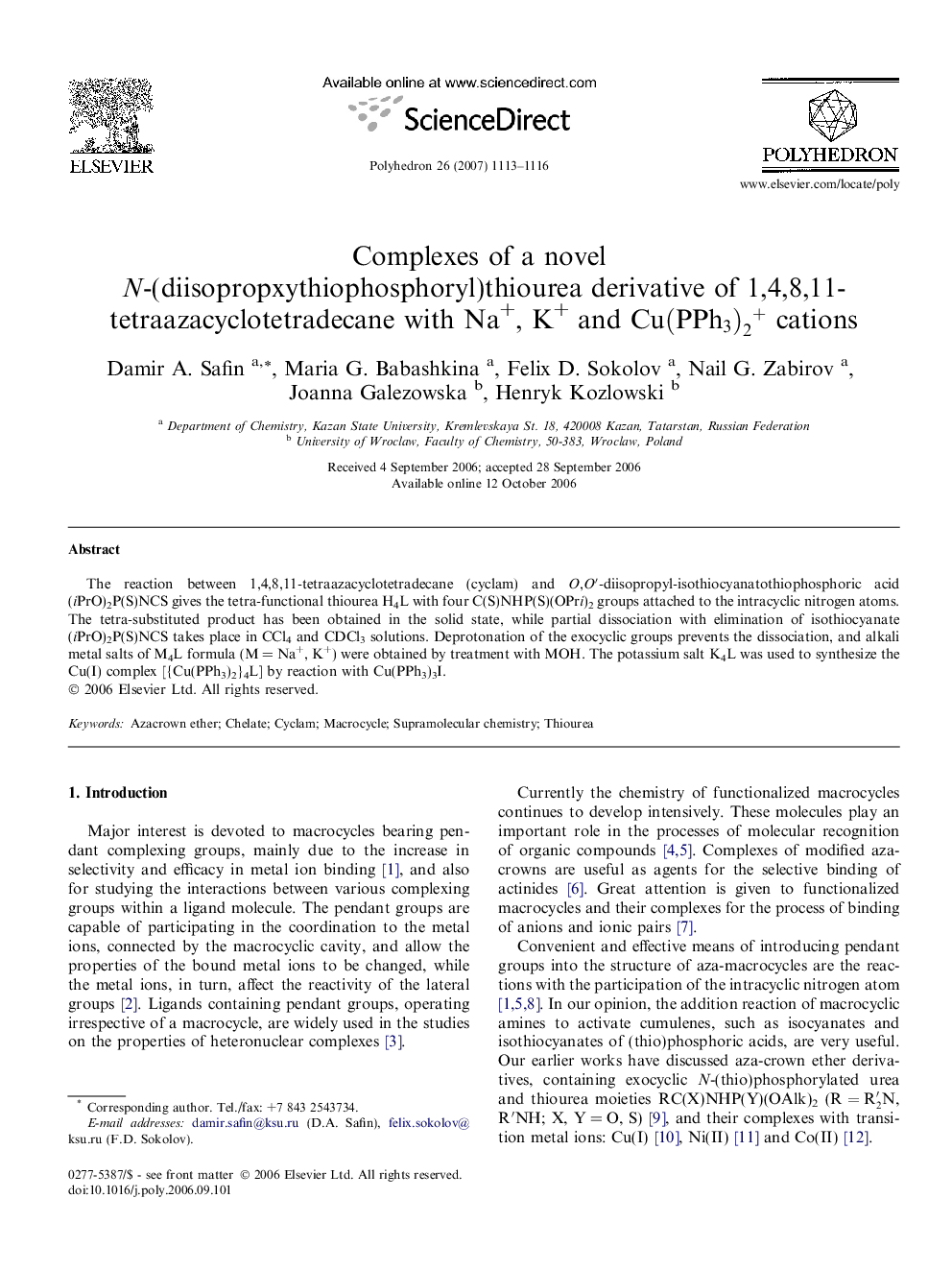| Article ID | Journal | Published Year | Pages | File Type |
|---|---|---|---|---|
| 1340323 | Polyhedron | 2007 | 4 Pages |
The reaction between 1,4,8,11-tetraazacyclotetradecane (cyclam) and O,O′-diisopropyl-isothiocyanatothiophosphoric acid (iPrO)2P(S)NCS gives the tetra-functional thiourea H4L with four C(S)NHP(S)(OPri)2 groups attached to the intracyclic nitrogen atoms. The tetra-substituted product has been obtained in the solid state, while partial dissociation with elimination of isothiocyanate (iPrO)2P(S)NCS takes place in CCl4 and CDCl3 solutions. Deprotonation of the exocyclic groups prevents the dissociation, and alkali metal salts of M4L formula (M = Na+, K+) were obtained by treatment with MOH. The potassium salt K4L was used to synthesize the Cu(I) complex [{Cu(PPh3)2}4L] by reaction with Cu(PPh3)3I.
Graphical abstractWe have reported a novel N-(diisopropxythiophosphoryl)thiourea derivative of 1,4,8,11-tetraazacyclotetradecane and its complexes with Na+, K+ and Cu(PPh3)+ cations. Structures of the obtained compounds were investigated by ES-MS, IR, 1H and 31P NMR spectroscopy and microanalysis. It was established that the obtained urea has a different composition in CCl4 and CDCl3, and in the solid state. The reaction of the potassium salt of thiourea with Cu(PPh3)3I leads to the tetra-N-substituted cyclam. Chelating fragments C(S)NP(S) are coordinated with the copper(I) cation in a didentate mode through sulfur atoms of the thiocarbonyl and thiophosphoryl groups.Figure optionsDownload full-size imageDownload as PowerPoint slide
